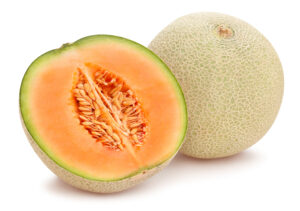The model estimated percentage of foodborne Salmonella, Escherichia coli O157, and Listeria
monocytogenes illnesses in 2021 attributed to each of 17 food source categories was recently released by the Interagency Food Safety Analytics Collaboration (IFSAC) made up of members from CDC, FDA, and USDA-FSIS.
The IFSAC group was established in 2011 to improve coordination of federal food safety analytic efforts and address priorities for food safety data collection, analysis, and use. IFSAC analyzes foodborne illness outbreak data for priority pathogens and specific foods and food categories responsible for foodborne illnesses in the United States. The data are analyzed by calendar
year and released in annual reports as part of ongoing efforts to understand sources of foodborne illness in the United States. The CDC estimates that together these priority pathogens — Salmonella, E. coli O157, Campylobacter, and L. monocytogenes — cause nearly two million cases of foodborne illnesses in the U.S. each year.
Foodborne illness source attribution estimates were generated from surveillance data collected between 1998 through 2021. The dataset included 1,322 outbreaks in which the confirmed or suspected implicated food or foods could be assigned to a single food category: 987 caused or suspected to be caused by Salmonella, 275 by E. coli O157, and 60 by L. monocytogenes. These include 46 outbreaks caused by
multiple serotypes of Salmonella. IFSAC assessed which categories of foods were most responsible for Salmonella, E. coli O157, and L. monocytogenes infections. These pathogens were chosen because of the frequency or severity of the illnesses they cause, and because targeted interventions can have a major impact in reducing them. The implicated foods were divided into 17 categories for the analysis. The method used for estimation gave the greatest weight to the most recent five years of outbreak data (2016–2020). The top food categories associated with each pathogen are detailed below.
For Salmonella, over 75% of illnesses were attributed to seven food categories including chicken, fruits, pork, seeded vegetables (such as tomatoes), other produce (such nuts), beef, and turkey. Estimated Salmonella illnesses were more evenly distributed across food categories than illnesses from E. coli O157, and L. monocytogenes.
Over 80% of E. coli O157 illnesses were attributed to vegetable row crops, such as leafy greens (lettuce, spinach), celeries, broccoli, and beef. Vegetable row crops had a significantly higher estimated attribution percentage than all other categories followed by beef.
For L. monocytogenes, over 75% of illnesses were attributed to dairy (fluid milk, hard and soft cheese), fruits (melons, apples, cherries, berries, mangoes, avocados), and vegetable row crops. However, the small total number of outbreaks (60) in the data set caused this estimate to be less reliable than estimates for the other pathogens.
The attribution of Salmonella illnesses to multiple food categories suggests that multiple types of
interventions are required to reduce illnesses from these pathogens. In contrast, the majority of E. coli O157 illnesses were attributed to two food categories suggesting that interventions for E. coli O157 focusing on these two food categories may be most effective in reducing illnesses. Most
L. monocytogenes illnesses were attributed to three food categories implicated in outbreaks in recent years.
Campylobacter attribution estimates were not provided. This was due to concerns about the limitations of using outbreak data that attributes Campylobacter illnesses to foods that are not routinely consumed by the general public. For example, 90% of dairy outbreaks involved raw milk and 55% of chicken outbreaks involved chicken livers, neither of which are readily consumed by the general public. As such, IFSAC analysts are developing other methods to estimate the sources of Campylobacter infection in future publications.
The authors advise that the estimates provided should not be interpreted as suggesting that all foods in a category are equally likely to transmit pathogens and comparisons over years can be skewed by a limited number of outbreaks. These results should be used with other scientific data for decision making. Overall, the attribution estimates can help inform efforts to prioritize food safety initiatives, interventions, and policies for reducing foodborne illnesses. The estimates also allow stakeholders (i.e. scientists; federal, state, and local policy-makers; the food industry; consumer advocacy groups; and the public) to assess whether prevention-oriented measures are working at intended.




